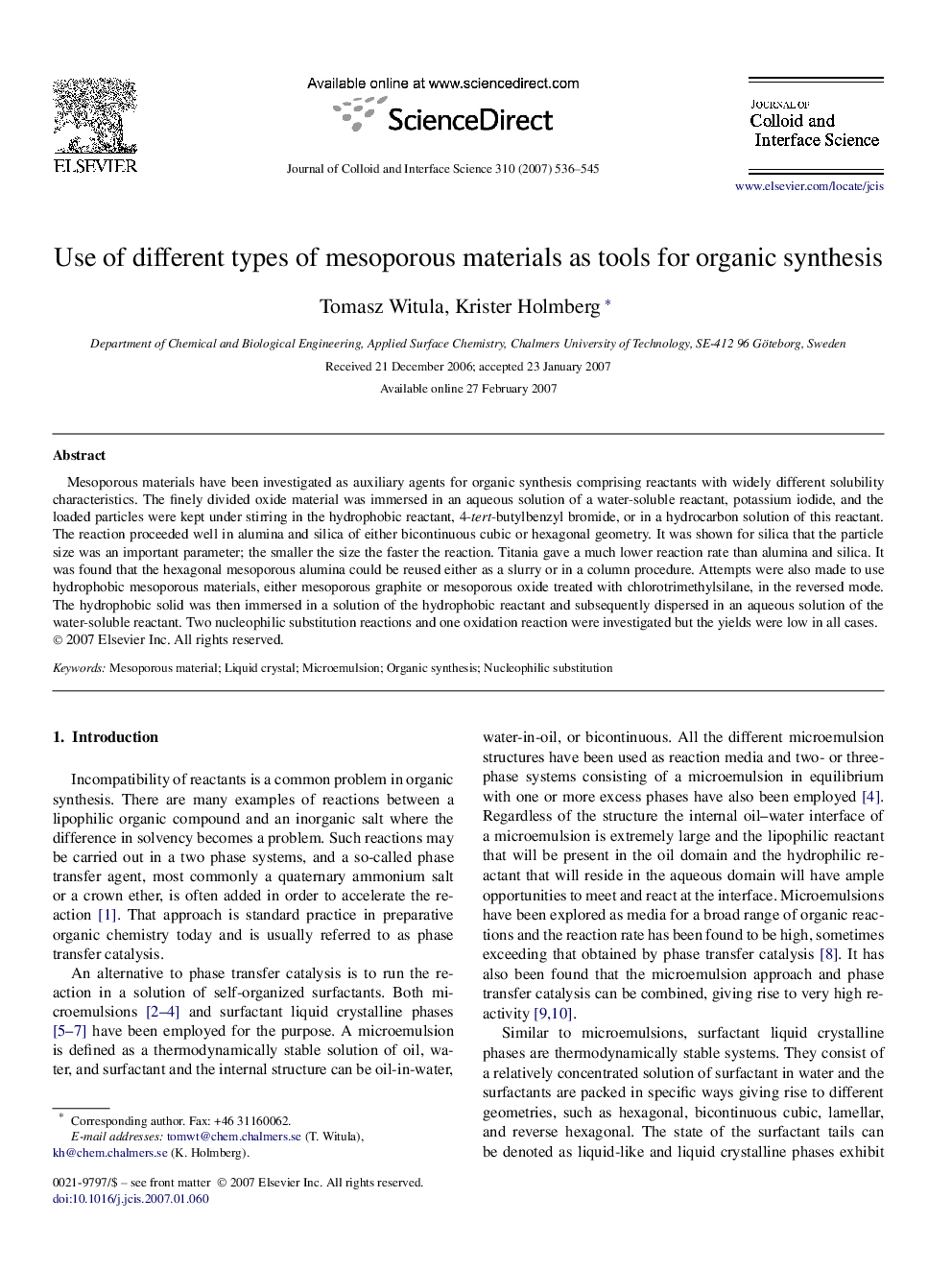| Article ID | Journal | Published Year | Pages | File Type |
|---|---|---|---|---|
| 612442 | Journal of Colloid and Interface Science | 2007 | 10 Pages |
Mesoporous materials have been investigated as auxiliary agents for organic synthesis comprising reactants with widely different solubility characteristics. The finely divided oxide material was immersed in an aqueous solution of a water-soluble reactant, potassium iodide, and the loaded particles were kept under stirring in the hydrophobic reactant, 4-tert-butylbenzyl bromide, or in a hydrocarbon solution of this reactant. The reaction proceeded well in alumina and silica of either bicontinuous cubic or hexagonal geometry. It was shown for silica that the particle size was an important parameter; the smaller the size the faster the reaction. Titania gave a much lower reaction rate than alumina and silica. It was found that the hexagonal mesoporous alumina could be reused either as a slurry or in a column procedure. Attempts were also made to use hydrophobic mesoporous materials, either mesoporous graphite or mesoporous oxide treated with chlorotrimethylsilane, in the reversed mode. The hydrophobic solid was then immersed in a solution of the hydrophobic reactant and subsequently dispersed in an aqueous solution of the water-soluble reactant. Two nucleophilic substitution reactions and one oxidation reaction were investigated but the yields were low in all cases.
Graphical abstractFigure optionsDownload full-size imageDownload as PowerPoint slide
